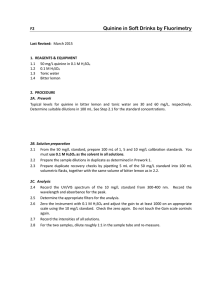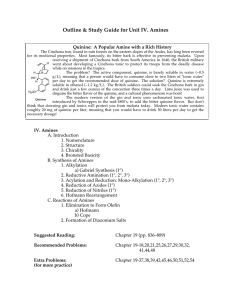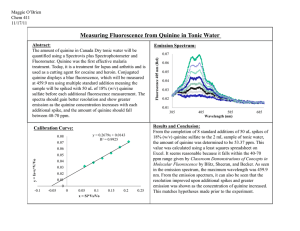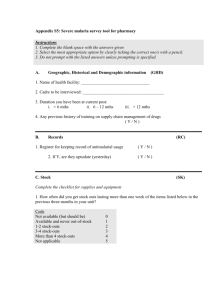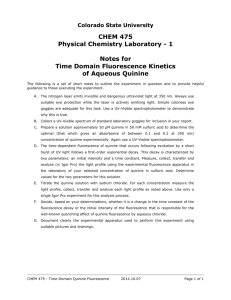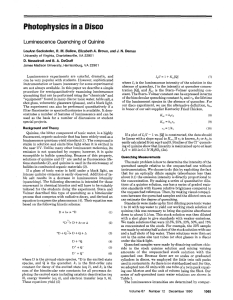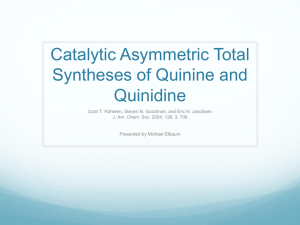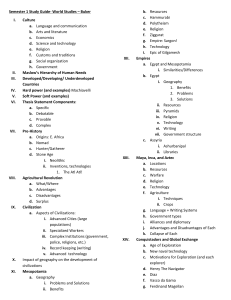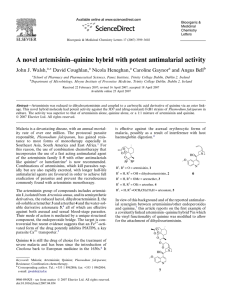Quinine in Soft Drinks by Polarography V3
advertisement
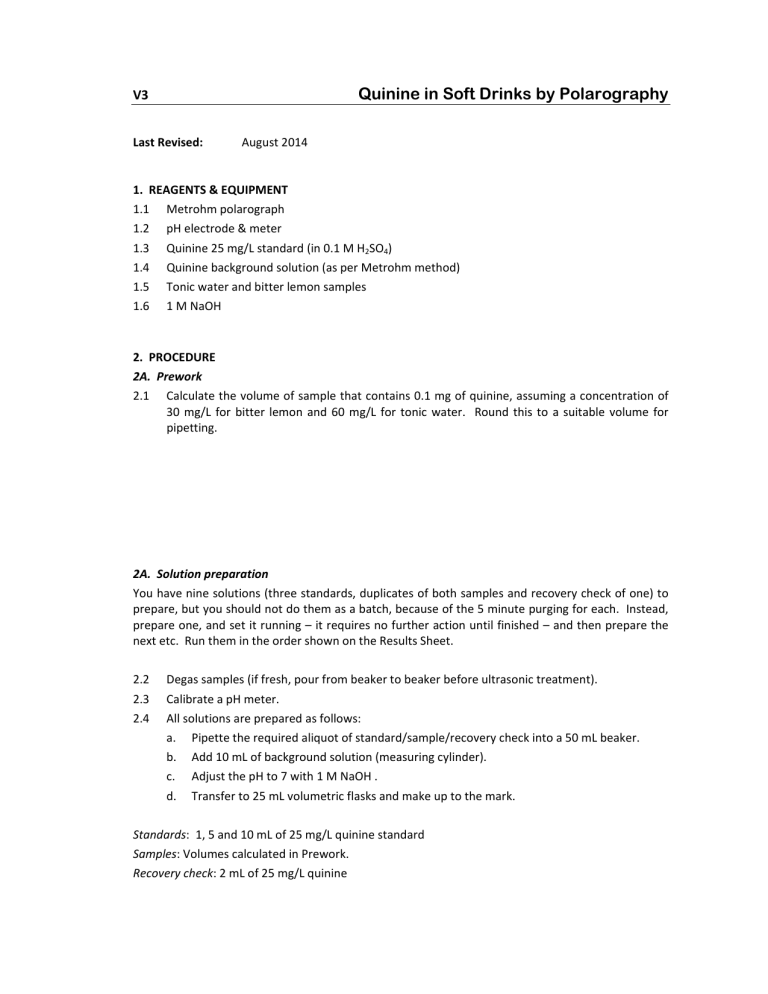
Quinine in Soft Drinks by Polarography V3 Last Revised: August 2014 1. REAGENTS & EQUIPMENT 1.1 Metrohm polarograph 1.2 pH electrode & meter 1.3 Quinine 25 mg/L standard (in 0.1 M H2SO4) 1.4 Quinine background solution (as per Metrohm method) 1.5 Tonic water and bitter lemon samples 1.6 1 M NaOH 2. PROCEDURE 2A. Prework 2.1 Calculate the volume of sample that contains 0.1 mg of quinine, assuming a concentration of 30 mg/L for bitter lemon and 60 mg/L for tonic water. Round this to a suitable volume for pipetting. 2A. Solution preparation You have nine solutions (three standards, duplicates of both samples and recovery check of one) to prepare, but you should not do them as a batch, because of the 5 minute purging for each. Instead, prepare one, and set it running – it requires no further action until finished – and then prepare the next etc. Run them in the order shown on the Results Sheet. 2.2 2.3 2.4 Degas samples (if fresh, pour from beaker to beaker before ultrasonic treatment). Calibrate a pH meter. All solutions are prepared as follows: a. Pipette the required aliquot of standard/sample/recovery check into a 50 mL beaker. b. Add 10 mL of background solution (measuring cylinder). c. Adjust the pH to 7 with 1 M NaOH . d. Transfer to 25 mL volumetric flasks and make up to the mark. Standards: 1, 5 and 10 mL of 25 mg/L quinine standard Samples: Volumes calculated in Prework. Recovery check: 2 mL of 25 mg/L quinine 2C. Analysis 2.5 Empty the contents of the flask into a polarographic cell, and place in the instrument as directed. 2.6 Load the method for this exercise and follow the prompts. 2.7 Record the diffusion current for each solution. 3. REPORT Calculations plot a calibration graph of current against concentration for the three standards determine the concentration of quinine in the diluted samples calculate the mass of quinine for each sample in the 25 mL volumetric flask (which is equal to the mass in the sample aliquot) convert this to mg/L of the original solution calculate the % recovery (it is easiest done at the stage where you have calculated the mass in the volumetric flask) Discussion compare your results with the expected values comment on the your recovery check result explain why pH control is important in this analysis (refer to the reaction of quinine at the electrode as shown in the Reference article) if you have done exercise F2, compare the two techniques for the analysis of quinine (if you have already made this comparison in your F2 report, you don’t need to do it again) Questions 1. What is the composition of the background solution? What is its purpose? 2. Explain why standard addition is not required for this analysis, compared to other polarographic analyses, eg ug/L levels of metals in creek water. 3. What is an alkaloid? Find the structure of quinine, and identify why it is classified as an alkaloid. Give TWO other examples of alkaloids. Reference: Metrohm method (download from Prac Exercises page) V3 p2 V3. ANALYSIS OF QUININE BY POLAROGRAPHY RESULTS SHEET Sample used as RC bitter lemon/tonic water Sample volume Bitter lemon Tonic water Solution 1 mL std 5 mL std 10 mL std BL1 TW1 RC1 BL2 TW2 RC2 Diff. Current
